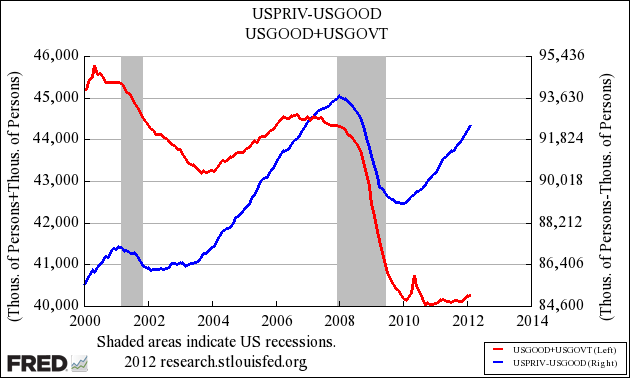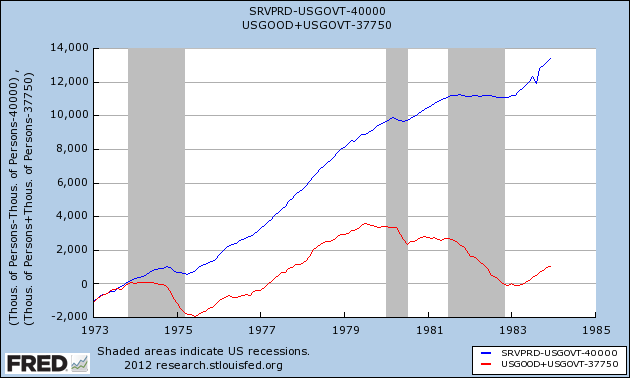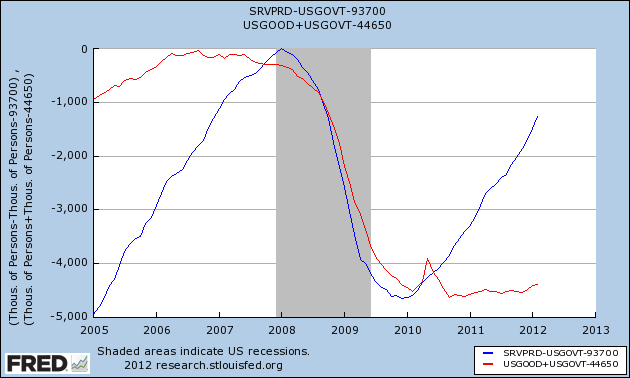Starting with the monthly reports, retail sales were up strongly, even after accounting for inflation. Industrial production was flat for February, but January was revised significantly higher. Capacity utilization increased, but January was revised down. The Empire State and Philly Fed regional reports were generally positive. YoY inflation at all levels decreased. Consumer sentiment, a leading indicator, declined slightly.
I watch the high frequency weekly indicators because any turning pointwill show up in these indicators first. This week they remained mixed, but generally positive.
Let's review from positive to negative.
Housing reports were positive:
The Mortgage Bankers' Association reported that the seasonally adjusted Purchase Index increased +4.4% from the prior week, although it was still -0.4% lower YoY. This is the third week of a strong rebound from the bottom of its two year range. The Refinance Index decreased -4.1% from the previous week, but was still near its highest level in over half a year.
YoY weekly median asking house prices from 54 metropolitan areas at Housing Tracker were up +3.4% from a year ago. This number peaked at over +4% a month ago. It remains at odds with the Case-Shiller reports of worsening YoY declines in price for comparable sales. Typically non-seasonally adjusted home sales prices peak in about June, so we should see in the next 15 weeks which one of the two metrics is going to turn.
Employment related indicators were positive or neutral:
The Department of Labor reported that Initial jobless claims fell 11,000 to 351,000 last week. The four week average was flat at 355,000. These remain close to the lowest readings in 4 years.
The Daily Treasury Statement showed that for thefirst 11 days of March, $89.8 B was collected wvw. $89.1 B a year ago. In the last 20 reporting days, $163.1 B was collected vs. $162.4 B for the eequivalent 20 day period in 2011, an increase of 0.4%, a very weak advance.
The American Staffing Association Index remained at 87. It remains midway between its 2011 and 2007 levels. Seasonally we want to see this move slightly higher over the next couple of weeks.
Sales remained positive.
The ICSC reported that same store sales for the week ending March 10 rose +2.3% w/w, and also rose only +1.7% YoY. Johnson Redbook reported a 3.3% YoY gain. This week was an improvement, which featured a rare sub-2% YoY reading. After a week of YoY negative readings, the 14 day average of Gallup daily consumer spending returned to weakly positive readings this week.
Money supply was generally positive to flat:
M1 was flat last week, and also fell -0.4% month over month. On a YoY basis it fell to +17.4%, so Real M1 is up 14.6%. YoY. M2 was up +0.2% for the week, and also up +0.2% month over month. Its YoY advance remained at +9.8%, so Real M2 was up 7.0%. In short, real money supply indicators continue slightly less strongly positive on a YoY basis, although not so much as in previous months, and have generally stalled in the last couple of months.
Bond prices fell and credit spreads were flat:
Weekly BAA commercial bond rates rose +.03% t0 5.11%. Yields on 10 year treasury bonds also rose +.03% to 2.00%. The credit spread between the two, which had a 52 week maximum difference of 3.34% in October, reamined at 3.11%. As I have previously said, narrowing credit spreads are not at all what I would expect to see if we were going into a recession.
Rail traffic remained negative but with an explanation.
Money supply was generally positive to flat:
M1 was flat last week, and also fell -0.4% month over month. On a YoY basis it fell to +17.4%, so Real M1 is up 14.6%. YoY. M2 was up +0.2% for the week, and also up +0.2% month over month. Its YoY advance remained at +9.8%, so Real M2 was up 7.0%. In short, real money supply indicators continue slightly less strongly positive on a YoY basis, although not so much as in previous months, and have generally stalled in the last couple of months.
Bond prices fell and credit spreads were flat:
Weekly BAA commercial bond rates rose +.03% t0 5.11%. Yields on 10 year treasury bonds also rose +.03% to 2.00%. The credit spread between the two, which had a 52 week maximum difference of 3.34% in October, reamined at 3.11%. As I have previously said, narrowing credit spreads are not at all what I would expect to see if we were going into a recession.
Rail traffic remained negative but with an explanation.
The American Association of Railroads reported a -4600 car decline in weekly rail traffic YoY for the week ending March 10, 2012. Intermodal traffic was up 9200 carloads, or +4.2%, but other carloads decreased -13,900, or -4.9% YoY. The entire decline in carloads is still due to coal shipments which were off 17,300 carloads or -13.1%. Railfax;s graph of YoY traffic by types remains in a positive trend.
The energy choke collar remains engaged:
Gasoline prices are about 7.5% higher than one year ago while usage continues to be much lower: Oil was steady at $107.06. Gas at the pump rose another $.04 to $3.83. Both of these are significantly above the point where they can be expected to exert a constricting influence on the economy. Gasoline usage, at 8415 M gallons vs. 8830 M a year ago, was off -4.8%. The 4 week moving average is off -7.2%. Both readings, while substantially less than one year ago, are in accord with readings from the last 6 months and unlike last week, do not warn of further weakness.
Turning now to high frequency indicators for the global economy:
The TED spread remained steady at 0.390. This index remians slightly below its 2010 peak, and has declined from its 3 year peak of 2 months ago. The one month LIBOR also remained at 0.242. It is well below its 12 month peak set 2 months ago, remains below its 2010 peak, and has returned to its typical background reading of the last 3 years.
The Baltic Dry Index at 874 was up 50 from 824 one week ago, and up 224 from its 52 week low, although still well off its October 52 week high of 2173. The Harpex Shipping Index was up 10 from 376 to 386 in the last week, up 11 from its 52 week low. Please remember that these two indexes are influenced by supply as well as demand, and have generally been in a secular decline due to oversupply of ships for over half a decade. The Harpex index concentrates on container ships, and led at recent tops and lagged at troughs. The BDI concentrates on bulk shipments such as coal and grain, and lagged more at the top but turned up first at the 2009 trough.
Finally, the JoC ECRI industrial commodities index rose slightly from 126.00 to 126.06. I have decided to report this as part of the indicators for the global economy, which ought to tell you a severe limitation I helieve it has as a barometer of the US economy.
That February real retail sales came in strong as anticipated is a welcome sign that the expansion is continuing. Same store sales were tepid and withholding taxes were weak, however. It is likely that the non-winter winter is playing havoc with railroad statistics, and may be influencing home sales. All that being said, the warning signs from last week were not repeated this week. There is some weakness, but there is no sign of any imminent contraction.
Have a nice weekend.



















































